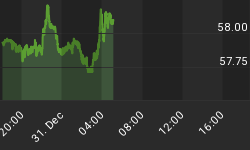Charts Monitor, Rather Than Dismiss Fundamental Data

Critics of technical analysis often mistakenly believe that using charts discounts the importance of fundamental data, such as earnings, employment, and economic growth. Charts allow investors to monitor the aggregate investor interpretation of all the fundamental data. Said another way, charts are efficient tools used to monitor vast amounts of fundamental data, which is important since fundamentals ultimately determine which assets classes will perform best. When the economy is healthy, stocks tend to beat bonds. When economic fear dominates, bonds tend to beat stocks. In this article, we will cover the latest signal from the markets that came on February 11, 2016.
Dow Theory Is Based On Economic Common Sense
Dow Theory is based on a series of Wall Street Journal articles written by Charles Dow. The basic tenets of Dow Theory are easy to understand. Charles Dow believed that:

- In order for industrial companies to increase their earnings, they had to produce and sell more goods.
- If industrial companies are selling more goods, then transportation companies must be delivering more goods to retailers and wholesalers.
- Therefore, in a healthy economy, both industrial companies and transportation companies should be experiencing revenue growth.
- If industrial and transportation companies are growing their revenues, then the industrial and transportation stocks should be attractive to investors.
- If industrial and transportation companies are doing well and are attractive to investors, both the Dow Jones Industrial Average and the Dow Jones Transportation Average should be making new highs in unison, serving to confirm a healthy economy.
- From a bearish perspective, signals are generated when the two indexes make important new closing lows, which is indicative of a weakening economy.
Behind The Averages
After reviewing the companies in the industrial and transportation averages, it is easy to see why they represent logical vehicles to monitor the pulse of the U.S. economy. I the present day, our economy is driven by more than just industrial or manufacturing companies. The Dow Jones Industrial Average contains traditional producers, such as IBM (IBM), 3M (MMM), Boeing (BA), Chevron (CVX), and Johnson & Johnson (JNJ). However, the Dow (DIA) also contains Visa (V), Goldman Sachs (GS), and American Express (AXP), since the present day economy relies heavily on the financial sector. The Dow Jones Transportation Average (IYT) still has railroads, such as Union Pacific (UNP) and Norfolk Southern (NSC), but it also contains more modern logistics companies, such as United Parcel Service (UPS), Fed-Ex (FDX), and J.B. Hunt (JBHT).
Just Reconfirmed Primary Bear Market
If investors believe industrial and transportation stocks are starting to become less desirable that speaks to their conviction to own these key sectors vs. their conviction to sell. When aggregate bearish conviction starts to outweigh aggregate bullish conviction, stock prices start to fall, which is also a reflection of investors' perception regarding future economic outcomes. The Dow Jones Industrial Average posted a new closing low on Thursday, February 11, 2016.

Similarly, the Dow Jones Transportation Average also posted a new closing low in December of last year. These lows are the basis for a new Dow Theory primary bear market confirmation signal.

Investment Implications - The Weight Of The Evidence
Our market model does not use Dow Theory, but it does use numerous inputs based on the Dow Jones Industrial Average. As noted in early January, the evidence has been saying "It Is A Good Time To Check Your Bear Market Game Plan". The Dow Theory signal that occurred on February 11 is another form of evidence saying the same thing. We continue to be concerned about the set-ups described on February 5. Conditions can begin to improve at any time, but until they do our allocations will continue to favor conservative assets (TLT) over growth-oriented assets (SPY).
















